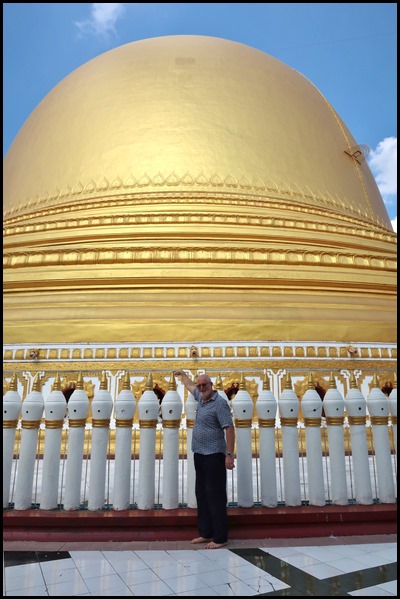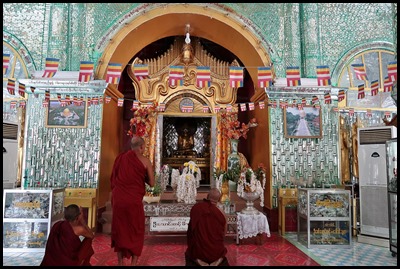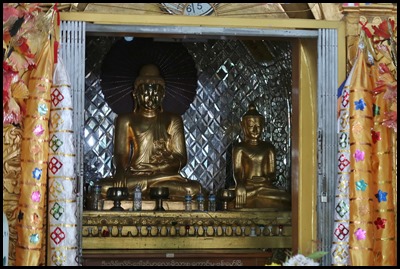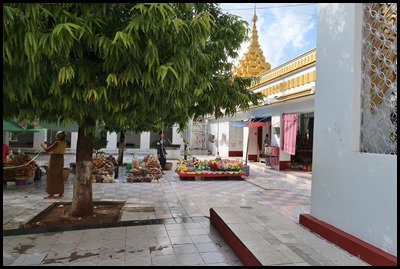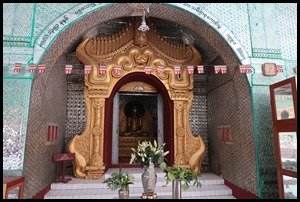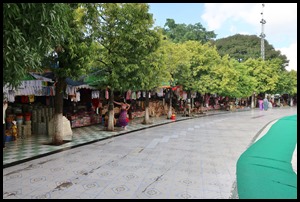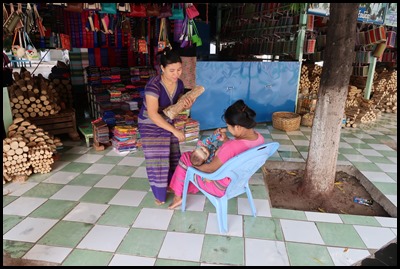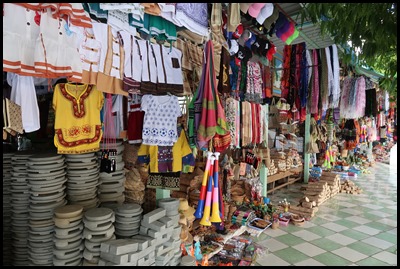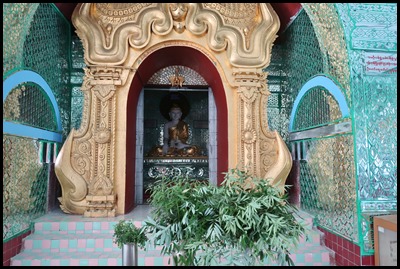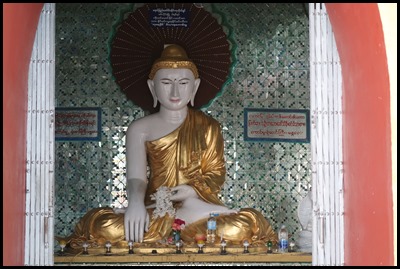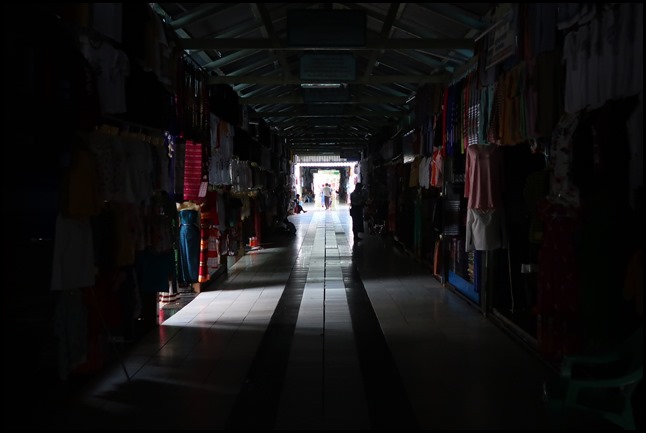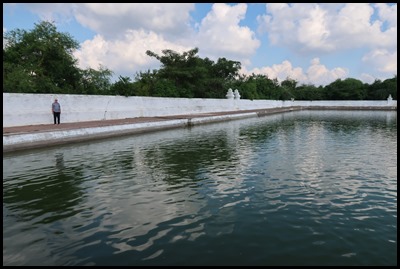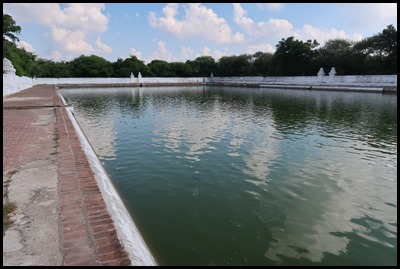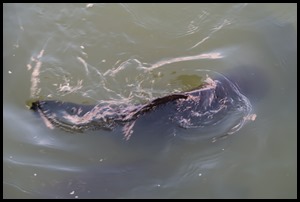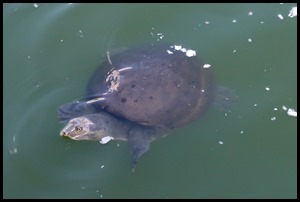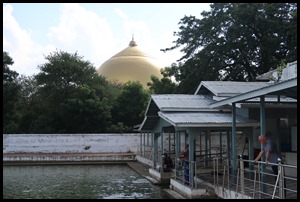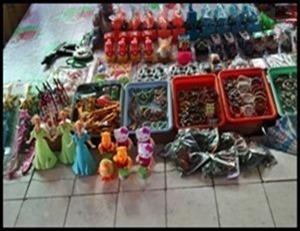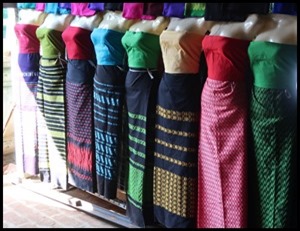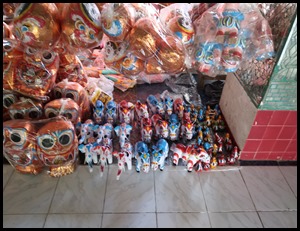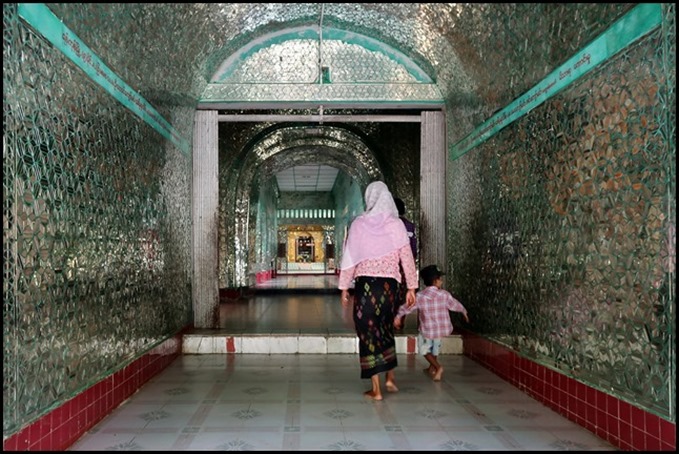Kaunghmudaw Pagoda

|
Kaunghmudaw
Pagoda 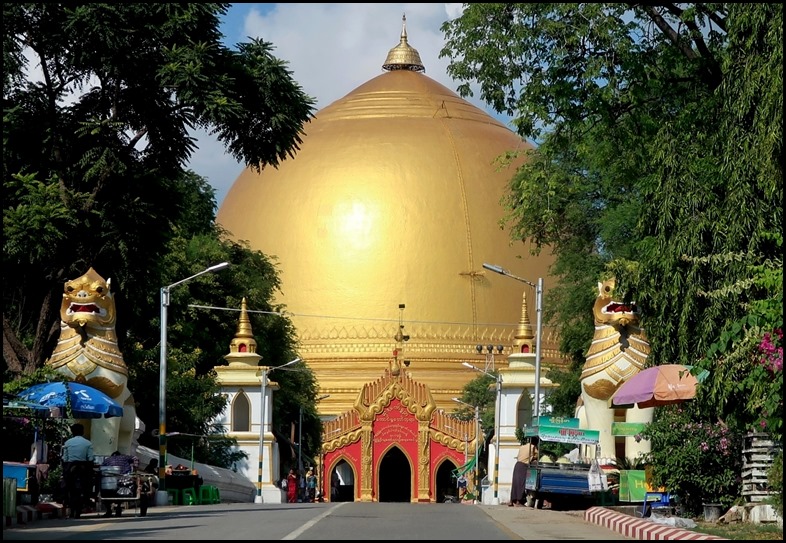 The Kaunghmudaw
Pagoda or Inwaa Pagoda is huge and if you look it up on line for a bit of
history, most of the pictures of it show a pure white dome, modeled after the
Maha Zeti Pagoda in Ceylon, white as Ceylonese pagodas are to show purity. It
was the decision of the Burmese government to paint the dome gold much against
the wishes of the faithful and locals. Designed to look like the Ruwanwelisaya
Pagoda (Great Stupa) in Sri Lanka, the Kaunghmudaw is quite unique in that the
dome is a perfect hemisphere rather the more traditional style, pyramid-shaped
Burmese pagodas.
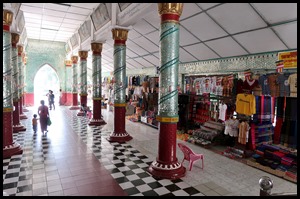  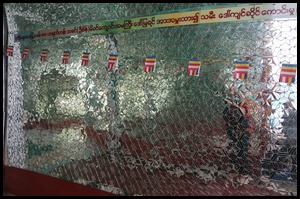  We walked in and found a massive space,
long corridor all glitzy and shiny. Traditional red and gold colours over a shrine arch and tiny patterns
in mirror chips. We passed a corridor running the other
way and decide to explore later.
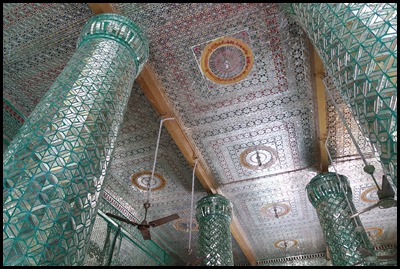  We looked up at incredible ceilings and
pillars.
The pagoda is an important pilgrimage and tourist destination in the Sagaing area. Construction began during the reign of King Thalun on the 25th of April 1636 to celebrate Inwaa becoming the capital of the region. The pagoda's relic chamber was dedicated on the 23rd of July 1636. The pagoda was completed twelve years later on 12th of May 1648 towards the end of the king’s reign. The stupa's formal name Yaza Mani Sula signifies the enshrinement of Buddhist artefacts inside the relic chamber, which is said to contain the lower left tooth relic of the Buddha, 11 hairs, an alms bowl, statues, pagodas and other bits and bobs. The chamber houses a sitting Buddha 7.3 metres high with a head diameter of 2.4 metres carved out of solid white marble. The pagoda differs from the traditional Burmese-style pyramidal structures by having an arched image chamber in the centre of its base. It is believed that the dome was built later around the massive statue.
The dome itself is 46 metres high, has a circumference of 274 meters. The hti (umbrella) of the pagoda )not seen at this angle) is nearly 8 metres high and weighs 3.5 kilograms. The dome circled by 802 stone lanterns, 1.5 metres in height, carved with inscriptions of Buddha's life in Burmese, Mon and Shan Yuan.
Behind Bear and the stone lanterns at the bottom of the dome are 120 Nats (martyrs) and devas.
The first shrine, monks praying to golden Buddha images.
We passed the bell, rounded a corner and saw the next shrine in the distance.
The next shrine also had a golden image, now we were on a shopping mall all around the edge.
The shops sold a wide variety of goods and face paint.
At the next shrine we followed the sign to the pool.
The corridor took us past so many stalls, all in the dark. The final stall sold bread, not sure why at this moment in time.
We came out at a huge pool hoping to get a good picture of the dome.
Big fish and inquisitive turtles, now we know why the bread stall was there. We walked on but the dome view wasn’t up to much due to trees being in the way.
On our way back, it was as if someone had rung a bell and stalls began to come to life.
Gorgeous little one sitting patiently, we guess she does every day while her mother runs her stall.
Wow, what an end to the corridor. Feet throbbing we headed out.
ALL IN ALL BEAUTIFULLY
MAINTAINED ON A GIGANTIC FOOTPRINT
VERY
IMPRESSIVE |
